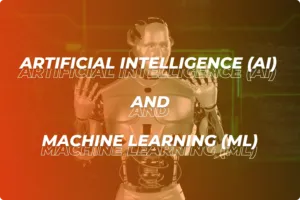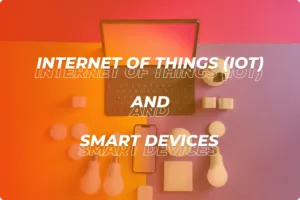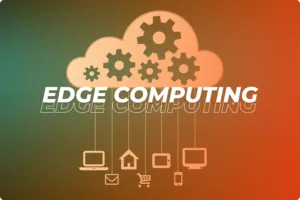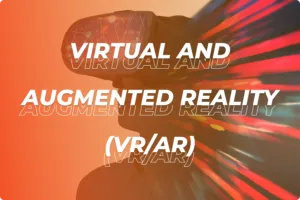Technology continues to evolve at an unprecedented rate. Along the way, it is also transforming industries and reshaping how we operate in a digital business environment. The technological change we have seen in the last decade is already more than what we saw in the previous 50 years combined. Where there is rapid growth, there are both opportunities and challenges for businesses of all sizes. Hence, if it’s survival and growth you’re after, you have to stay informed about the latest tech trends. Failure to adapt means disaster that starts with falling behind to losing your competitive edge and ending with becoming obsolete.
But do not worry! In this article we will get you up to date with the most significant technologies impacting business in 2025. But that’s not all, we’ll also understand why these trends matter. Last but not the least, you will also learn how to prepare for these trends as a business.
So, get ready to learn about artificial intelligence and machine learning to the critical importance of cybersecurity and more.

Trend # 1: Artificial Intelligence (AI) and Machine Learning (ML)
Possibly the most essential tech trend that businesses need to be aware of is that of AI and ML integration. Picture this: You incorporate AI into the decision-making process. It analyzes new patterns and insightful data in a matter of minutes using vast sets of information that would take weeks for a designated group of employees to comb through. Here are some examples of how AI and ML can be leveraged in business today:
- If your company aims to focus on specific customer segments with custom-tailored messages, AI can help you craft and deliver personalized marketing campaigns.
- Take the manufacturing sector for instance where equipment failure and downtime are often a major concern. With AI, you’ve got predictive maintenance that allows you to anticipate disaster and minimize downtime.
- Other uses of AI are seen in AI-powered chatbots that provide 24/7 personalized customer support. Then there is fraud detection, risk management and even content generation.
Challenges
While AI and machine learning offer opportunities never seen before, there are challenges for businesses too. First off, you’ve got to be aware of ethical considerations like bias in algorithms. Afterward, businesses can only deal with data privacy issues once they have complied with the industry standard regulations. Lastly, a good team of personnel will be required to design, implement, and manage the AI systems. Therefore, you will need to spend resources on their education and training.
Trend # 2: Cybersecurity
From the land of opportunity and excitement, we shift our focus to a trend that has the potential to cause severe damage to any business. As technology evolves to become more sophisticated, so do the cyber threats. The cost of cybercrimes like data breaches, ransomware attacks or operational distributions is increasing by the day. Did you know that the global average cost per data breach was 4.88 million U.S. dollars in 2024? Therefore, companies across the world are incorporating only the most robust security measures. Here are a few examples:
- Encryption methods of the past have become easier to breach. So, businesses are now using quantum-safe security measures like two-step verification, multi-factor authentication and advanced encryption tools.
- AI is also a major contributor with its proactive threat detection systems. Imagine being able to detect and (potentially) stop some likely attacks before they do damage.
- The companies are then again working on giving the training to the employees thinking that it can help them with types of cyberattack such as phishing scams, social engineering attack, etc.
- Finally, implementing strong firewalls and periodic security audits has proven to be an efficient approach in dealing with the ever-changing landscape of cyberthreats.
Challenges
As far as challenges are concerned, it is the evolving nature of cybersecurity that remains a continuous concern. It is not a matter of one-time-fix; rather businesses need to remain vigilant at all times and adapt such security measures that put them ahead of the curve. Lastly, where there is an increase in remote work, the vulnerabilities increase too.
Trend # 3: Internet of Things (IoT) and Smart Devices
The collection and exchange of data is not limited to IT setups in today’s digital landscape. Nowadays, all types of devices are interconnected, from everyday appliances to industrial machinery. Collectively, this phenomenon is called the Internet of Things (IoT).
What’s the significance of IoT and this interconnectedness of businesses? First off, it gives you the opportunity to optimize operations, improve efficiency and create new revenue streams. Imagine being able to get real-time data from IoT devices; how valuable those insights would be when incorporated into the processes, ultimately leading to automation and a better decision-making system. Here are a few examples of companies incorporating IoT in everyday use:
- For monitoring production lines, predicting equipment failures, and optimizing resource allocation in a manufacturing business, IoT sensors in smart factories do the job.
- For the supply chain sector, IoT can track goods in real-time which improves logistics and delays are reduced.
- Even in sectors like agriculture, monitoring soil conditions or weather patterns can be monitored using IoT sensors.
- In healthcare, you get wearable devices with IoT sensors that track your vital signs and give the doctors remote monitoring capabilities.
Challenges
The more widespread adoption we see of IoT, the more concerns of data security and privacy will be raised. As data is being produced by the second, there is a critical need for it to be protected against cyberattacks. What about the privacy of the individual whose data is being collected using IoT devices! Lastly, even if your devices give you a massive volume of data, it will still require businesses to have a robust infrastructure and expertise to be able to manage and analyze that data.
Trend # 4: Cloud Computing (Multi-Cloud and Hybrid-Cloud)
When it comes to having unparalleled scalability, flexibility, and cost-effectiveness, no other tool has offered businesses more than cloud computing. It is a cornerstone upon which the modern IT infrastructure thrives upon. But in 2025, businesses are taking it a step further with multi-cloud strategies. Imagine being able to avoid vendors lock-in as a business and instead, use multiple cloud providers. Won’t the strengths of different platforms combine to optimize your business performance?
If you think your on-premises infrastructure is critical to your business’s IT operations, there is something called a hybrid cloud approach. Businesses are using it to create a balance between control and agility; this is especially effective for those businesses that have specific security and compliance requirements. Here are a few examples of cloud computing being implemented in businesses today:
- If you need secure and easily accessible repositories for data storage and backup, look no further than cloud platforms.
- Sharing documents or conducting project management is not easier than ever before with cloud-based collaboration platforms that also enhance team productivity.
- For valuable insights into customer interactions, there are Customer Relationship Management (CRM) systems that are hosted in the cloud.
- Companies worldwide are also making use of cloud infrastructure for application development. These platforms allow you to create, test, deploy and accelerate time to market for several kinds of apps.
Challenges
As much as cloud computing is a blessing, there are obstacles to looking out for businesses. First off, the vendor selection for the cloud-based platforms has to be done securely and carefully. If you wish to go for a vendor lock-in, it can be risky with single cloud-strategies. With data security being a top priority, robust security features within the cloud are essential. Lastly, if you wish to migrate the data, there will be complexities which will require expertise of skilled cloud professionals.
Trend # 5: Edge Computing
Another key trend businesses must know about is edge computing and its implementation in the broader business IT landscape. The idea behind edge computing is to process data closer to the source where it is generated, rather than having to only rely on centralized data centers. What do businesses gain from this approach?
To begin with, the latency is significantly reduced. You get real-time data analysis and decision-making. Sensitive data is protected locally in edge computing which in turn enhances security. Therefore, if you have applications that require immediate responses or operation in remote locations where connectivity is limited, edge computing is the way to go. Here are some examples of how edge computing is being utilized by businesses today:
- You combine edge computing with IoT deployments and the real-time sensor data collected can be processed simultaneously.
- Edge computing is heavily involved in autonomous vehicles. They use it to process data from their sensors; it enables them to make split-second driving decisions.
- For the manufacturing sector, there is real-time quality control and predictive maintenance happening on the factory floor.
Challenges
The biggest challenge businesses face when implementing edge computing is the lack of robust infrastructure. This further means you need closer functionality as well as robust lightweight processing devices along with connectivity to ensure smooth integration of edge computing. Managing and securing data can be complicated because there are so many edge locations.
Trend # 6: Decentralized Finance (DeFi)
Looking for open, transparent, and accessible financial systems? Well, look no further than DeFi — Decentralized Finance. The thought behind this trend is to change the standard approach to financial services through blockchain technology. This means you already have a choice beyond conventional banking and investment schemes! That’s the power of DeFi, as it simplifies transactions, lowers costs, and opens access for everyone from individual users to big businesses. This is how businesses can leverage it in 2025:
- So, if you want to borrow and lend cryptocurrency directly without dealing with intermediaries such as banks, DeFi is the answer.
- If you require a less volatile medium for transactions and investments, use stablecoins, cryptocurrencies tied to stable assets, such as the US dollar.
- Finally, accessing insurance, asset management, and other financial services is also made available to businesses through DeFi platforms.
Challenges
One of the most significant challenges for DeFi is regulations. Governments are still struggling to figure out how to regulate this nascent industry. On the security side: Vulnerabilities exist in smart contracts and hacks. Lastly, the volatility of cryptocurrency is often a risk, and it underpins many DeFi applications.
Trend # 7: Virtual and Augmented Reality (VR/AR)
Virtual Reality (VR) and Augmented Reality (AR) are two pillars of immersive technologies. The great thing about them is that they impact both employees and customer experience while offering collaboration across various industries. VR is used to fill a digital space, and AR is used to put touchable, interactive experiences onto the real-world environment. Here’s a roundup of how they’re being used in businesses:
- High-risk occupations such as surgeons or pilots offer perfect cases for VR to practice complicated procedures in a safe and controlled setting.
- Imagine if customers could ‘try on’ clothing virtually! Won’t that be exciting? They can do it with AR as it overlays the clothes onto the bodies virtually.
- In manufacturing, AR is a great tool to give workers real-time instructions and guidance, especially during assembly processes.
Challenges
VR/AR are technologies of the highest standard and therefore, their implementation will require businesses to invest significantly in hardware, software and content creation. Even if it gets implemented successfully, are your users ready to adopt such a complex and unique phenomenon? Therefore, you will have to make sure the users find the VR/AR experiences intuitive and valuable; only then will it be widely accepted.
Final Thoughts
Tech trends are something businesses of today must remain on top of at all times. The only way to adopt new practices to transform sectors such as AI/ML and IoT would be to embrace these emerging technologies. One has to be informed and cooperate with a reliable IT services provider to overcome the challenges. Which brings us to FunctionEight.
With over 20 years of expertise in implementing cutting-edge IT solutions, we ensure your business seamlessly adapts to the latest technologies and stays ahead in a rapidly evolving digital landscape. Where is your business headed? Let’s connect and craft a strategy that keeps you ahead of the competition in 2025 and beyond.






